Ever want to grow a mini-hedge with native plants?
Many of us are passionate about native plants – how they look, their flowering and form, and the fact that they are uniquely Australian. But what about how natives perform as specific landscape elements, like a hedge, or mini-hedge?
Here are points to consider if you want to plant a native mini-hedge or hedge and some suggestions for plants that might work.

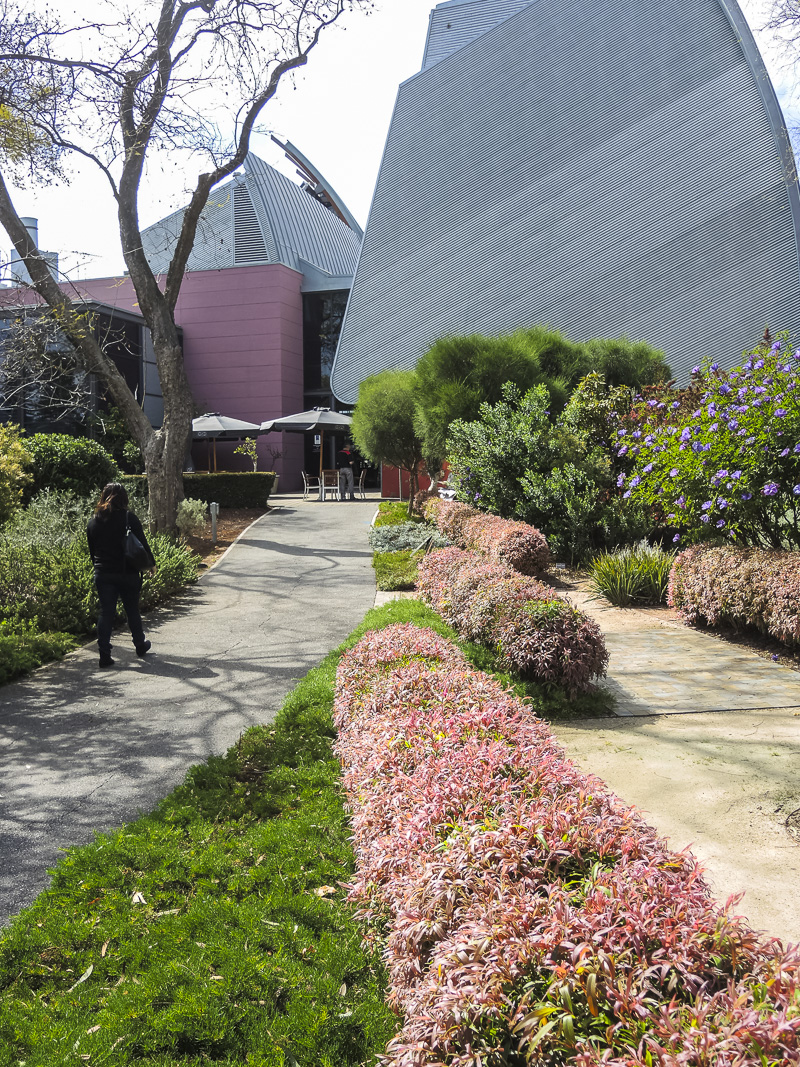
Melaleuca ‘Great Balls of Fire’, image Lawrie Smith. Click for info on Melaleucas which are great for hedges.
What is a mini-hedge?
I call small clipped hedges mini-hedges. Nowadays small clipped hedges are not as favoured as they once were, no doubt because of the work involved in their cultivation.
However, particularly in formal gardens, hedges of native plants are a great feature to consider as they create structure.
Factors to consider for a hedge
The first priority in choice of plants is their suitability for a hedge. This is where some experimentation may be required as plant databases, and our own knowledge, may be limited.
We have to decide whether to use a frequently planted, well known species or a relatively unknown one. Many of us will be keen to include the unusual or little tried plant.
What is required for a plant for a hedge?
- Small leaves are important and the plant’s ability to tolerate ongoing clipping.
- Life span and hardiness are important factors for mini-hedges and hedges because dead plants in the middle of a hedge detract from the beauty of hedge overall. It is hard to fill the hedge in with replacement plants if one dies.
- Foliage that remains at the base of the plant is also critical, so there are no straggly bits at the base.
Suitable plants for hedges
Many of the Lillypillies are now very much in favour as hedges.
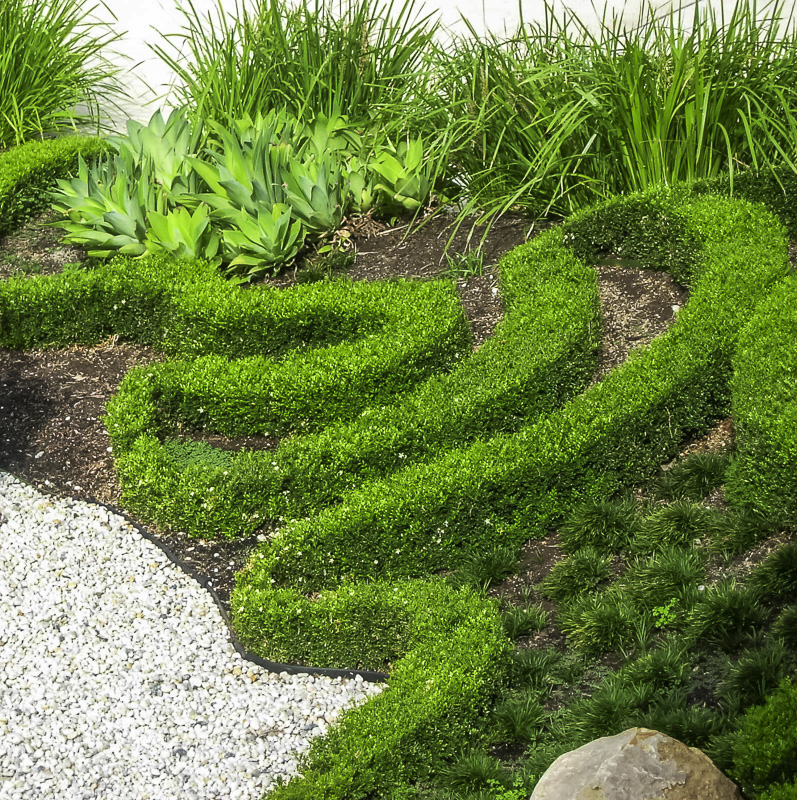
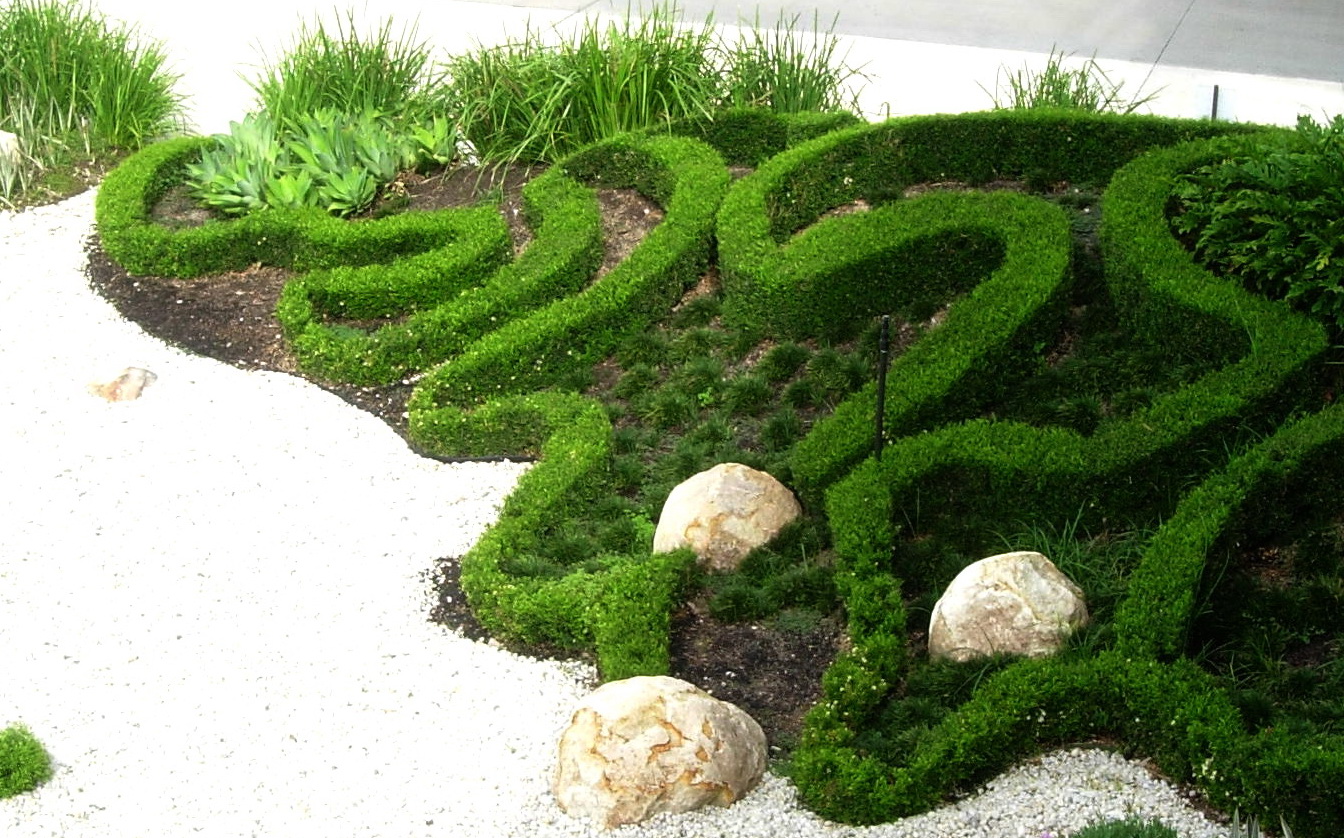
Syzygium ‘Tiny Trev’ works well as a mini-hedge, image Lawrie Smith. There are a range of Syzygium good for hedges – click here

Hedge of Acmena smithii ‘Allyn Magic’, surrounding grassy patch, image Lawrie Smith
Graptophyllum excelsum (Letter-leaf or Scarlet Fuchsia) is an option that I have tired. It has relatively small leaves and a good appearance and clipping has worked well.

Graptophyllum excelsum, image Heather Miles
Another option for a prickly hedge is Pittosporum pauciflorus (Citriobatus spinescens) or Native Orange.

The dwarf Baeckea could be a candidate but I have preferred to let it grow naturally, so I do not know whether it could be repeatedly clipped and still look so attractive.
Options for a larger hedge
Somewhat larger hedges of a metre or so may be possible with Backhousia citriodora (Lemon-scented Myrtle) and again Graptophyllum excelsum.
Rhagodia spinescens (Saltbush) has also be successful used as a hedge or mound, although these are a bit bigger than mini-hedges.


Hedge of Rhagodia spinescens at Burnley, image Heather Miles
Callistemon are a wonderful option for larger hedges, particularly species like Callistemon ‘Endeavour’.
A dense hedge of grevilleas can also work well.
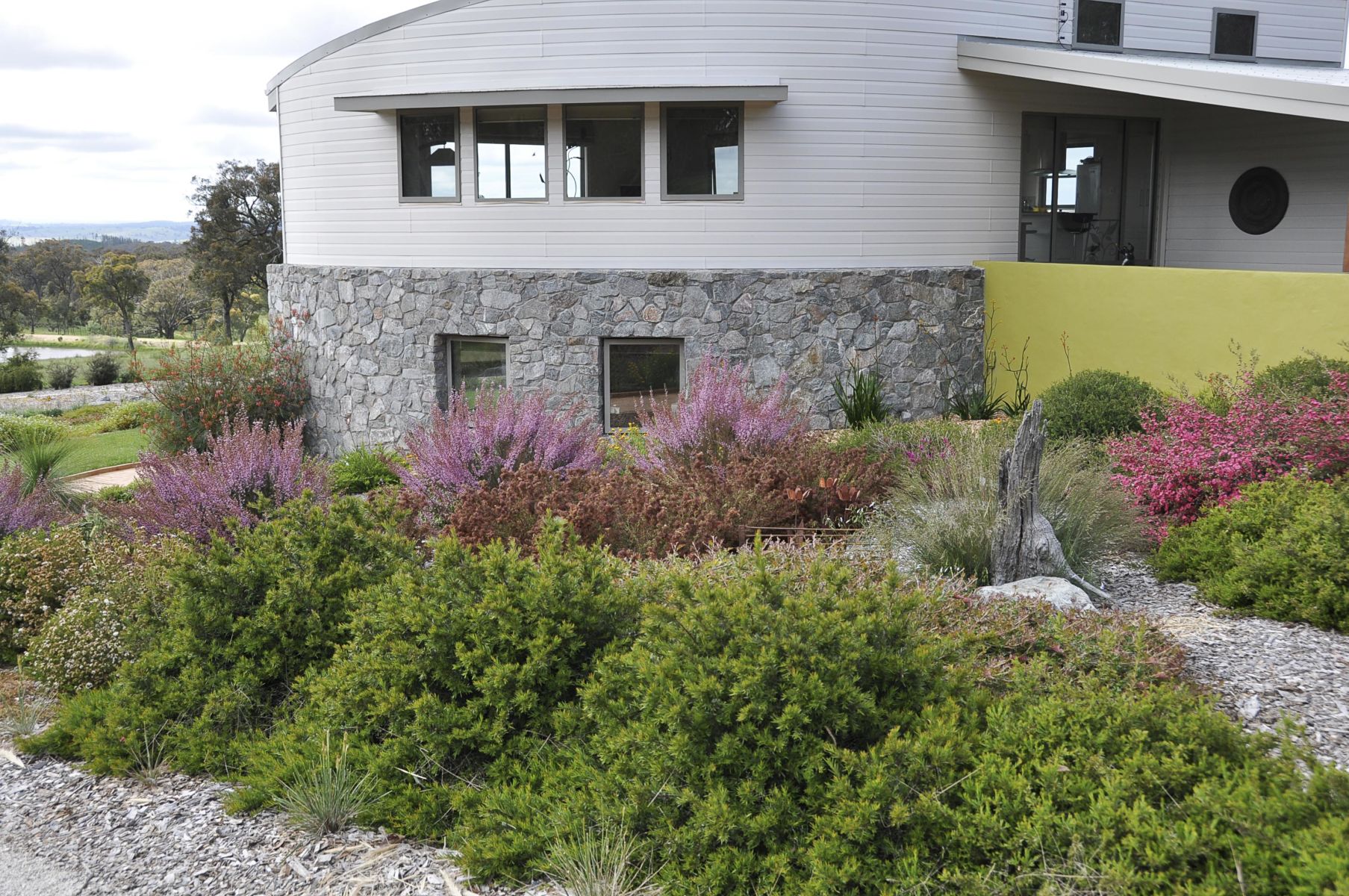
A low growing hedge of grevilleas in a Central Tablelands garden, image Fiona Johnson
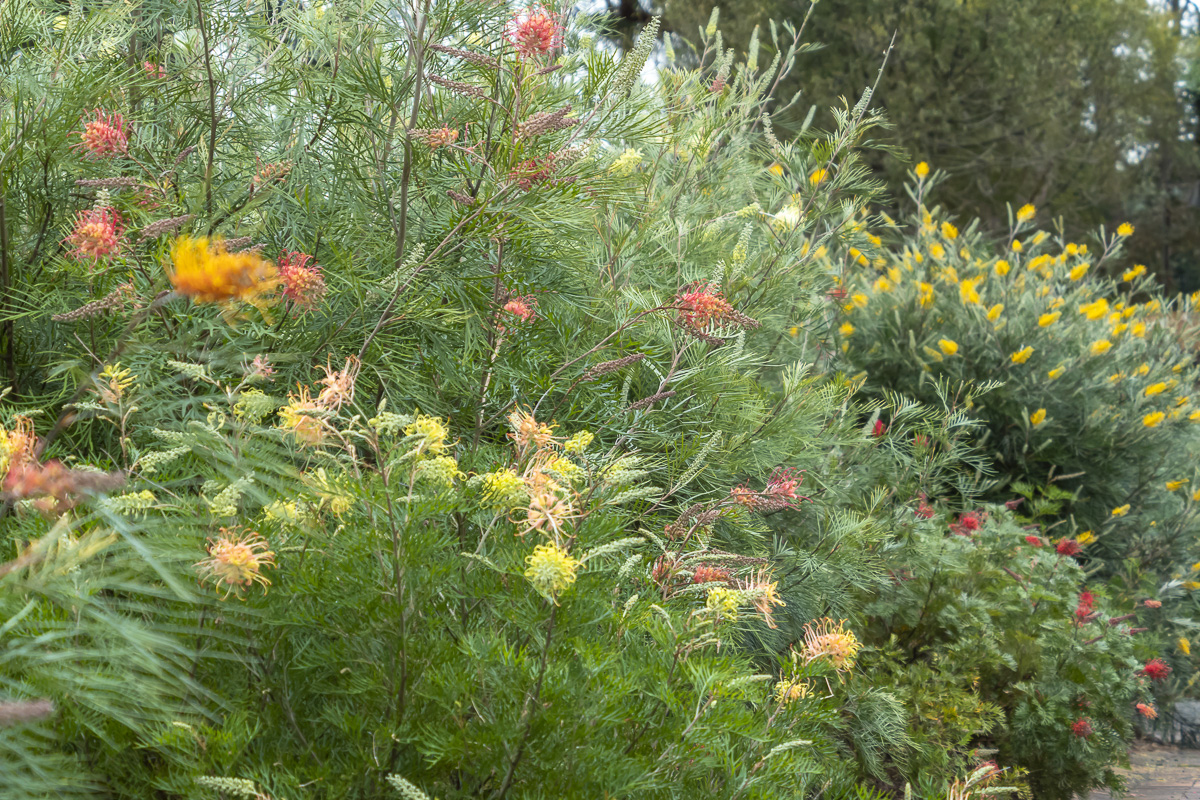

Dense planting of multicoloured grevilleas works well for a larger hedge, as does the one on the right, Grevillea synaphae, both at illawarra Grevillea Park, image Heather Miles
In summary, we need to know much more about Australian plants for specific purposes in landscaping. This means continuing to experiment and gather information and experience to benefit future gardeners. Another great article is at Gardening with Angus, here.
 Australian Native Plants Society (Australia)
Australian Native Plants Society (Australia)